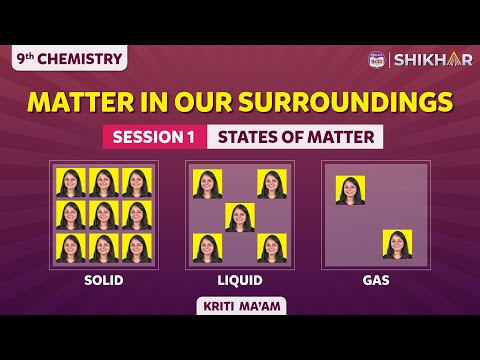As we look at our surroundings, we see many things with different shapes, sizes and textures. Anything that occupies space and has mass is known as matter. It comprises all biotic and abiotic components around us. We can further divide matter into three types. Solid, liquid and gas are the three types of matter.
Download Class 9 Chemistry Worksheet on Chapter 1 Matter in Our Surroundings Set 2 PDF
CBSE Class 9 Chemistry Chapter 1 Matter in Our Surroundings Worksheet – Set 2
Q1. BEC is the abbreviation of the _______.
(a) Bose-Einstein Condensate
(b) Bose-Einstein Coolant
(c ) Bose-Einstein Condenser
(d) None of the above
Q2. What is the chemical formula of dry ice?
(a) CO2
(b) H2O
(c ) H2O2
(d) None of the above
Q3. Which of the following phenomenon is responsible for cooling water kept in the earthen pot?
(a) Evaporation
(b) Diffusion
(c ) Transpiration
(d) None of the above
Q4. Which of the following form of matter has a fixed volume but not shape?
(a) Carbon dioxide
(b) Water vapour
(c ) Kerosene oil
(d) None of the above
Q5. Which of the following compound undergo sublimation?
(a) Ice cube
(b) Sodium chloride
(c ) Naphthalene
(d) None of the above
Q6. Fill in the blanks and give a suitable reason for your answer.
(i) The diffusion rate of liquids is ______ than that of solids.
(ii) Naphthalene undergoes the process of ______.
Q7. What do you understand by the term vapourisation?
Q8. Why do particles vibrate in solids?
Q9. Convert the temperature to 70° C to the Kelvin scale.
Q10. What is the value of latent heat of fusion of ice?
Q11. Why is steam burns much more severe than boiling water burns?
Q12. How can we liquefy the gas?
Q13. What is the primary factor that determines the state of matter?
Q14. Which gas will diffuse rapidly among chlorine, carbon dioxide, methane and nitrogen? Give a suitable reason for your answer.
Q15. Why is plasma seen in the stars?
Q16. Why do solids have the most potent intermolecular forces of attraction?
Q17. What do you mean by the statement that the melting point of ice is 273.16 K?
Q18. Give some examples of the plasma state of matter?
Q19. Which phenomenon of gases enables us to catch LPG gas leakage?
Q20. How will you differentiate between solid, liquid and gas?
Download the PDF to access answers to the Chemistry Worksheet for Class 9 Chemistry Chapter 1 Matter in Our Surroundings Set – 2
Download PDF
Read Also:
- Matter in Our Surrounding
- Matter in our Surrounding Questions
- States of Matter
- Chemistry Concept Questions and Answers
- Class 9 Chemistry Chapter 1 Matter in Our Surroundings MCQs
- Class 9 Chemistry Chapter1 – Matter in Our Surroundings Important Questions with Answers
Recommended Videos
Matter in Our Surroundings Class 9 Science (Part-2)

Matter In Our Surroundings – States of Matter


